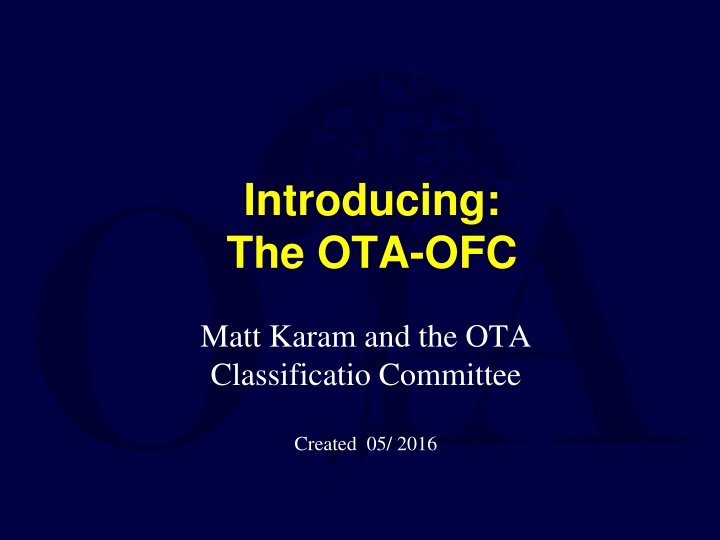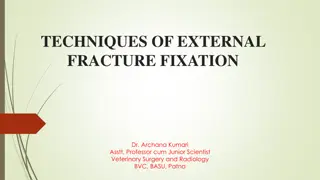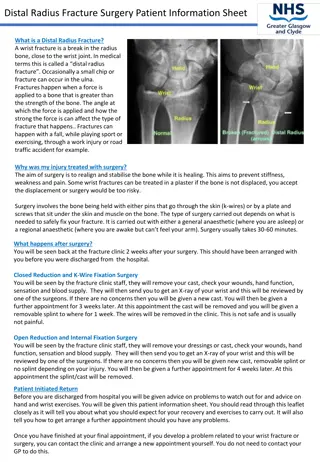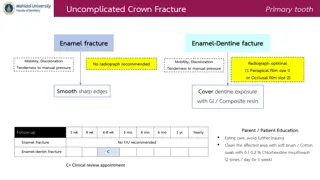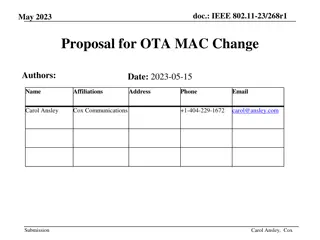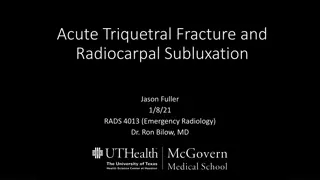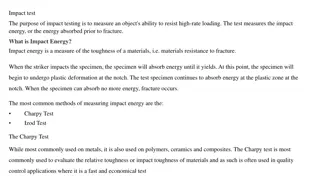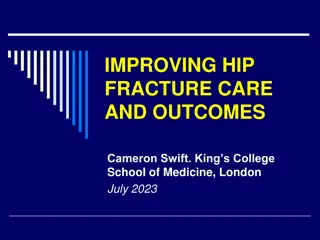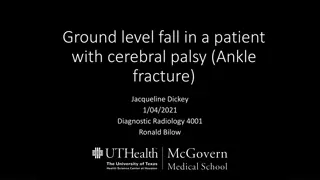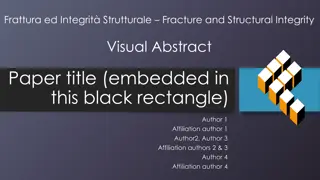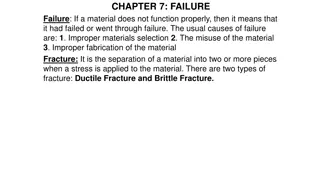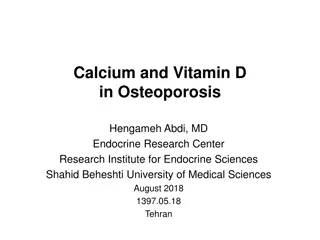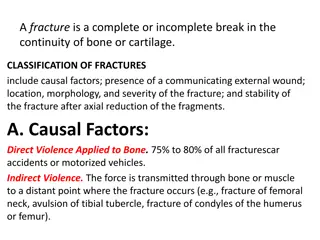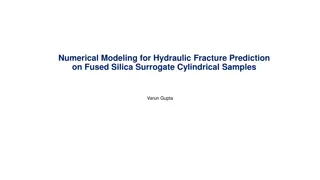OTA-OFC: Open Fracture Classification & Essentials
Delve into the OTA-OFC - the OTA Open Fracture Classification system developed by Matt Karam and the OTA Classification Committee in 2016. Explore its 5 essential categories: Skin Injury, Muscle Injury, Arterial Injury, Contamination, and Bone Loss. This comprehensive system aids in evaluating and categorizing open fractures, providing crucial insights for orthopedic surgeons and residents. Discover the reliability of OTA-OFC through a diverse multinational cohort study, comparing its effectiveness with the Gustilo-Anderson System. Enhance your knowledge of open fracture management with this valuable resource.
Download Presentation

Please find below an Image/Link to download the presentation.
The content on the website is provided AS IS for your information and personal use only. It may not be sold, licensed, or shared on other websites without obtaining consent from the author.If you encounter any issues during the download, it is possible that the publisher has removed the file from their server.
You are allowed to download the files provided on this website for personal or commercial use, subject to the condition that they are used lawfully. All files are the property of their respective owners.
The content on the website is provided AS IS for your information and personal use only. It may not be sold, licensed, or shared on other websites without obtaining consent from the author.
E N D
Presentation Transcript
Introducing: The OTA-OFC Matt Karam and the OTA Classificatio Committee Created 05/ 2016
What is the OTA-OFC? The OTA Open Fracture Classification
Expert Panel 5 essential categories skin injury, muscle injury, arterial injury, contamination, bone loss J Orthop Trauma Volume 24, Number 8, August 2010
OTA-OFC: 5 Categories Skin Muscle Arterial Contamination Bone Loss J Orthop Trauma Volume 24, Number 8, August 2010
OTA-OFC Skin 1. Can be approximated 2. Cannot be approximated 3. Extensive degloving Compliments of Dr. James Kellam
OTA-OFC Muscle 1. No muscle in area, no appreciable muscle necrosis, some muscle injury with intact muscle function 2. Loss of muscle but the muscle remains functional, some localized necrosis in the zone of injury that requires excision, intact muscle-tendon unit 3. Dead muscle, loss of muscle function, partial or complete compartment excision, complete disruption of a muscle - tendon unit, muscle defect does not approximate
OTA-OFC Arterial 1. No injury 2. Artery injury without ischemia 3. Artery injury with distal ischemia
OTA-OFC Contamination 1. None or minimal contamination 2. Surface contamination (easily removed not embedded in bone or deep soft tissues) 3. a. Imbedded in bone or deep soft tissues b. High risk environmental conditions (barnyard,fecal,dirty water etc)
OTA-OFC Bone Loss 1. None 2. Bone missing or devascularized but still some contact between proximal and distal fragments 3. Segmental bone loss
OTA-OFC: Reliability? Yes ! Diverse multinational cohort of orthopedic surgeons and residents Reviewed 12 videos of open fracture cases Compared reliability to Gustilo- Anderson System J Orthop Trauma Volume 27, Number 7, July 2013
OTA-OFC Can it predict treatment? Retrospective review of 356 patients at a level 1 trauma center Suggest that the subclassification of 5 categories has potential advantages of determining treatment(s) which may be related to short term outcome Agel et al. JOT Volume 28, Number 5, May 2014
Retrospective review of 512 open fractures Gustilo-Anderson classification did not correlate with outcome OTA-OFC skin injury component was an independent predictor of limb ampuation
For questions or comments, please send to ota@ota.org If you would like to volunteer as an author for the Resident Slide Project or recommend updates to any of the following slides, please send an e-mail to ota@aaos.org Return to General/Principles Index E-mail OTA about Questions/Comments OTA res slide btn Return to General/Principles Index E-mail OTA about Questions/Comments
